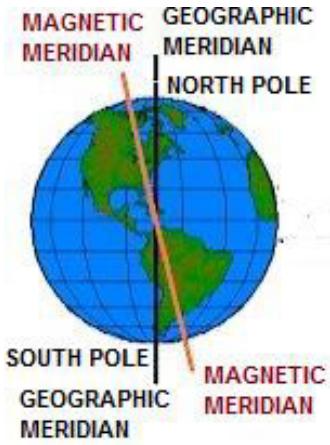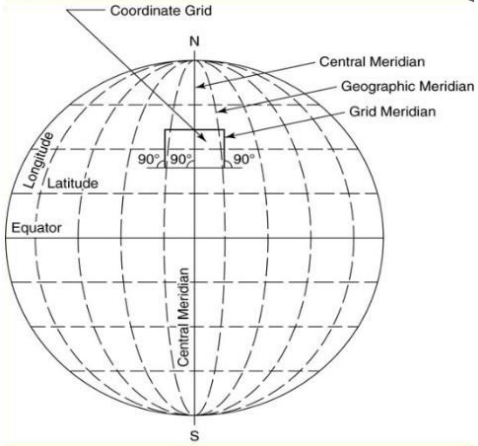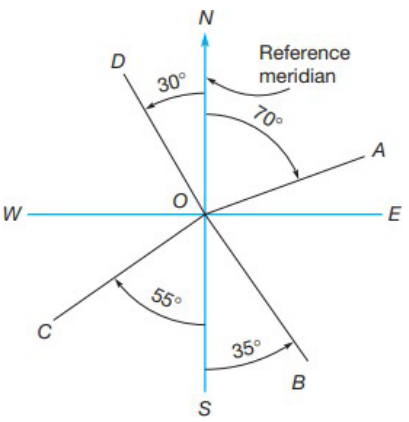Lec9 : Direction of Lines
1/22
There's no tags or description
Looks like no tags are added yet.
Name | Mastery | Learn | Test | Matching | Spaced |
|---|
No study sessions yet.
23 Terms
Angles (or Angles measured)
Are classified as either horizontal or vertical.
Directions
- In surveying, are given by azimuths and bearings.
Sexagesimal System / English System
Based on degrees, minutes, and seconds
Centesimal System / French System
Based on gradians
International System (SI)
Based on radians
Angular Mil
Based on milliradians
Direction of Lines
1rev = 360° = 2π = 400grads = 6400mils
Meridian
The direction of a line is defined by a horizontal angle between the line and an arbitrary chosen reference line
Types of meridians
1. Geographic (True)
2. Magnetic
3. Grid
4. Assumed
Geographic Meridian
North-south reference line that passes through a mean position of the Earth’s geographic poles.
Magnetic Meridian
Defined by a freely suspended needle that is only influenced by the Earth’s magnetic field.
Grid Meridian
A fixed line of reference parallel to the central meridian of a system of plane rectangular coordinates.
Assumed Meridian
Established by merely assigning any arbitrary direction.
Geographic and Magnetic Meridian

Grid and Assumed Meridian

True North
North point of the true meridian.
Magnetic North
Established by means of a magnetic compass needle when there are no local attractions affecting it.
Grid North
North point which is established by lines on map which are parallel to a selected central meridian.
Assumed North
Used to portray the location of any arbitrary chosen north point.
Bearings
- The acute horizontal angle between a reference meridian and the line
- Observed from either north or south toward the east or west
Bearings

Azimuths
- Horizontal angles observed clockwise from any reference meridian
- Observed from either north or south toward the east or west
- To avoid confusion, it is necessary to state in the field notes what reference meridian applies for them and whether they are observed from north or south
Azimuths
